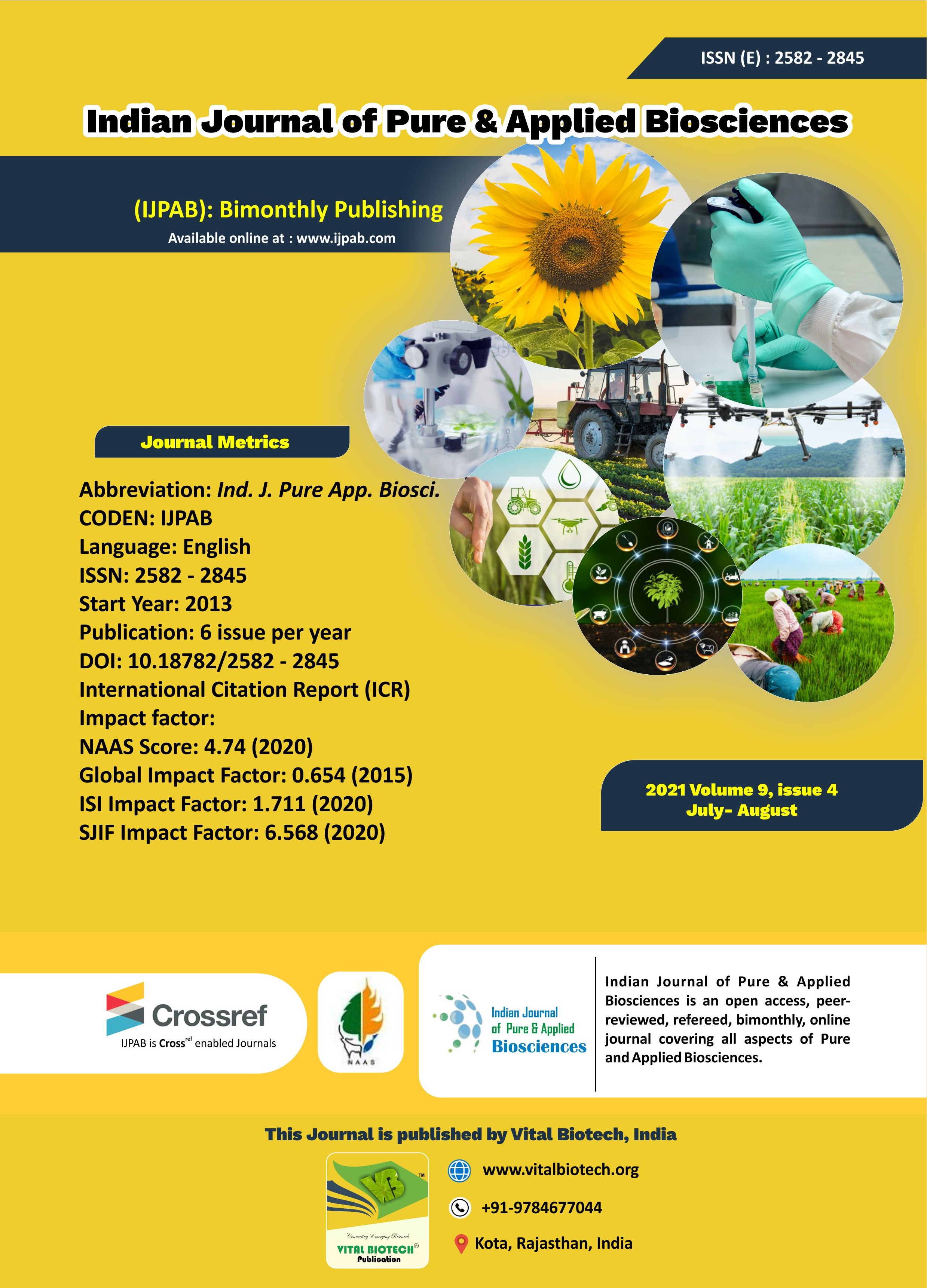-
No. 772, Basant Vihar, Kota
Rajasthan-324009 India
-
Call Us On
+91 9784677044
-
Mail Us @
editor@ijpab.com
Indian Journal of Pure & Applied Biosciences (IJPAB)
Year : 2021, Volume : 9, Issue : 4
First page : (129) Last page : (135)
Article doi: : http://dx.doi.org/10.18782/2582-2845.8759
Comparative Growth Rate of Cyanobacteria from “Usar” Soil (saline/alkaline soils) with Respect to Pigments
Vivek Kumar Yadav* and D.V. Singh
Department of Botany, Udai Pratap College, Varanasi-221002; Uttar Pradesh, India
*Corresponding Author E-mail: viyadav30@gmail.com
Received: 15.06.2021 | Revised: 24.07.2021 | Accepted: 8.08.2021
ABSTRACT
The pigment content in Blue-green algae is a specific feature of each species. The pigment variation is specific features among microalgae. The paper aim to analyze cyanobacterial extracts of different Usar soil of Azamgarh and Varanasi, Uttar Pradesh. The main object here is the importance of the blue green algae especially because of the pigments present in this class of algae. Pigments from natural sources are gaining more importance mainly due to health and environmental issues. Algae contain a wide range of pigments. Three major classes of pigments are chlorophylls, carotenoids (carotenes and xanthophylls) and phycobilins (Phycocyanin and phycoerythrin). Our present study investigates the efficiency for phycobiliprotein pigment production from four different cyanobacteria Hapalosiphon sp., Phormidium sp., Anabaena sp. and Nostoc sp. The harvested and dried biomass was subjected to extract pigments using different solvents. Thin Layer Chromatography was performed from extracted pigments using Acetone as extraction solvents. And running solvent especially for phycocyanin pigment was optimized and concluded that Petroleum ether and Acetone in the ratio of 7:3. This paper presents the information about the natural pigments of cyanobacteria and how they can be extracted and identified using different procedures and spectrophotometry. It emphasizes that the principal algal pigments are Phycobilins, Chlorophylls and Carotenoids.
Keywords: Cyanobacteria, cyanobacterial extracts, Cyanobacterial pigments, Phycobilins and Phycocyanin.
Full Text : PDF; Journal doi : http://dx.doi.org/10.18782
Cite this article: Yadav, V. K., & Singh, D. V. (2021). Comparative Growth Rate of Cyanobacteria from “Usar” Soil (saline/alkaline soils) with Respect to Pigments, Ind. J. Pure App. Biosci. 9(4), 129-135. doi: http://dx.doi.org/10.18782/2582-2845.8759


